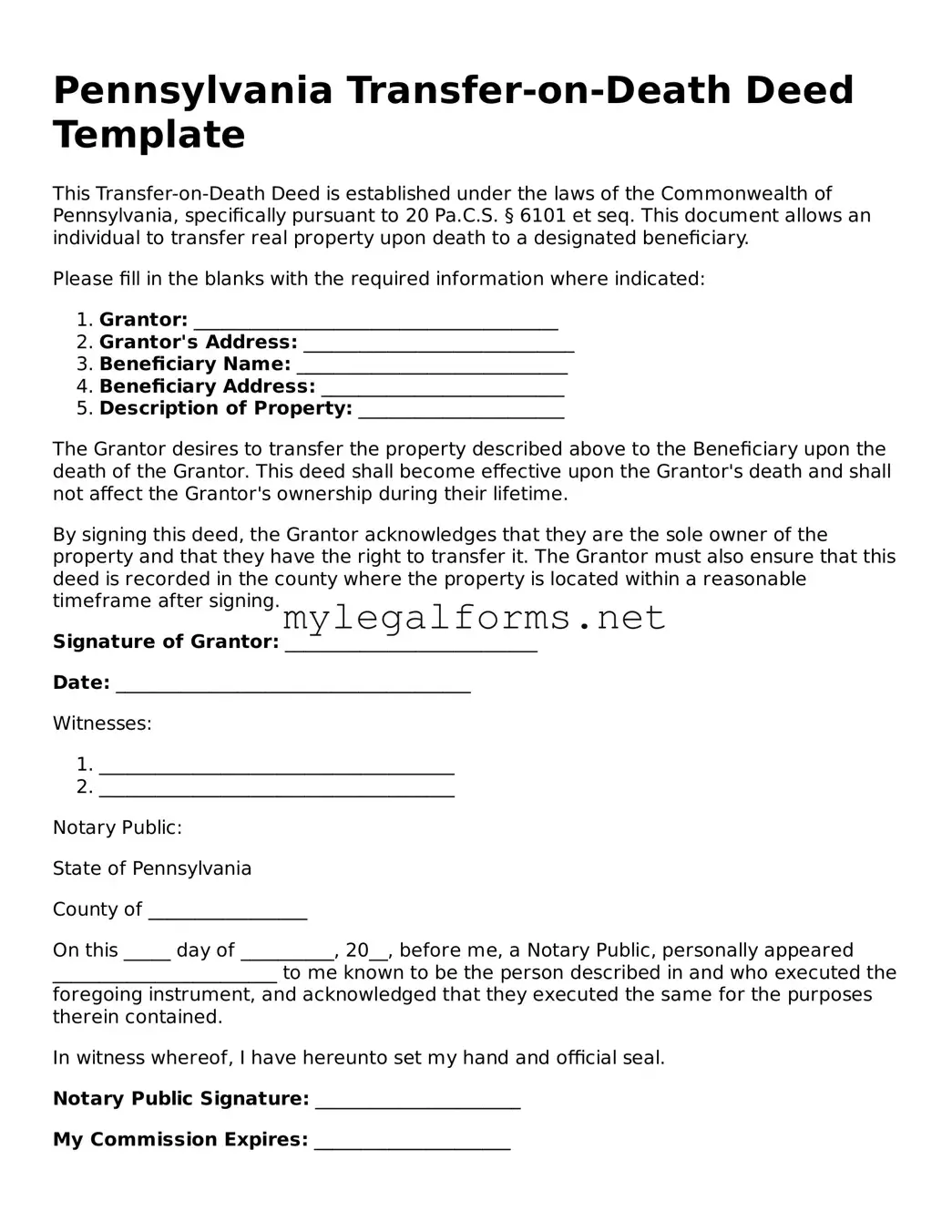Pennsylvania Transfer-on-Death Deed Template
This Transfer-on-Death Deed is established under the laws of the Commonwealth of Pennsylvania, specifically pursuant to 20 Pa.C.S. § 6101 et seq. This document allows an individual to transfer real property upon death to a designated beneficiary.
Please fill in the blanks with the required information where indicated:
- Grantor: _______________________________________
- Grantor's Address: _____________________________
- Beneficiary Name: _____________________________
- Beneficiary Address: __________________________
- Description of Property: ______________________
The Grantor desires to transfer the property described above to the Beneficiary upon the death of the Grantor. This deed shall become effective upon the Grantor's death and shall not affect the Grantor's ownership during their lifetime.
By signing this deed, the Grantor acknowledges that they are the sole owner of the property and that they have the right to transfer it. The Grantor must also ensure that this deed is recorded in the county where the property is located within a reasonable timeframe after signing.
Signature of Grantor: ___________________________
Date: ______________________________________
Witnesses:
- ______________________________________
- ______________________________________
Notary Public:
State of Pennsylvania
County of _________________
On this _____ day of __________, 20__, before me, a Notary Public, personally appeared ________________________ to me known to be the person described in and who executed the foregoing instrument, and acknowledged that they executed the same for the purposes therein contained.
In witness whereof, I have hereunto set my hand and official seal.
Notary Public Signature: ______________________
My Commission Expires: _____________________
